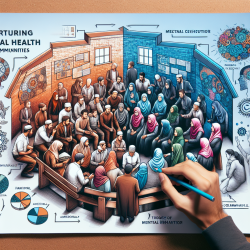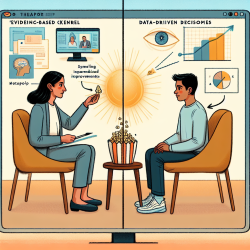Introduction
In the realm of speech and language pathology, understanding the genetic underpinnings of Specific Language Impairment (SLI) can significantly enhance therapeutic outcomes. The research article "Convergent Genetic Linkage and Associations to Language, Speech, and Reading Measures in Families of Probands with Specific Language Impairment" sheds light on genetic linkages that influence language, speech, and reading phenotypes. This blog explores how practitioners can leverage these findings to refine their therapeutic strategies and encourages further research in this promising field.
Key Findings from the Research
The study analyzed genetic linkages and associations in families with SLI probands, focusing on candidate regions linked to Reading Disability (RD) and Speech Sound Disorder (SSD). Key findings include:
- Linkage analysis replicated the influence of genes on chromosome 6p for language, speech, and reading domains, with KIAA0319 showing a strong effect on language phenotypes.
- The genetic influences may differ across the domains of language, speech, and reading, suggesting a complex interplay of multiple genes.
- Evidence supports a multi-gene model of comorbidity between language impairments and reading disability.
Implications for Practice
For practitioners, these findings underscore the importance of a data-driven approach to therapy. By understanding the genetic basis of language impairments, therapists can tailor interventions to address specific genetic profiles. Here are some practical steps to consider:
- Genetic Screening: Incorporate genetic screening into the assessment process to identify potential genetic linkages that may influence therapy outcomes.
- Targeted Interventions: Develop interventions that specifically target the genetic profiles identified, focusing on enhancing language and reading skills.
- Collaborative Research: Engage in collaborative research efforts to further explore the genetic basis of SLI and refine therapeutic techniques.
Encouraging Further Research
While the study provides valuable insights, it also highlights the need for further research. Practitioners are encouraged to contribute to ongoing studies and explore the potential of emerging genetic technologies in speech and language therapy. By staying informed and involved, therapists can help advance the field and improve outcomes for children with SLI.
Conclusion
The intersection of genetics and speech-language pathology offers exciting possibilities for enhancing therapeutic outcomes. By embracing data-driven approaches and continuing to explore genetic linkages, practitioners can make significant strides in supporting children with Specific Language Impairment. To delve deeper into the research, read the original research paper.










